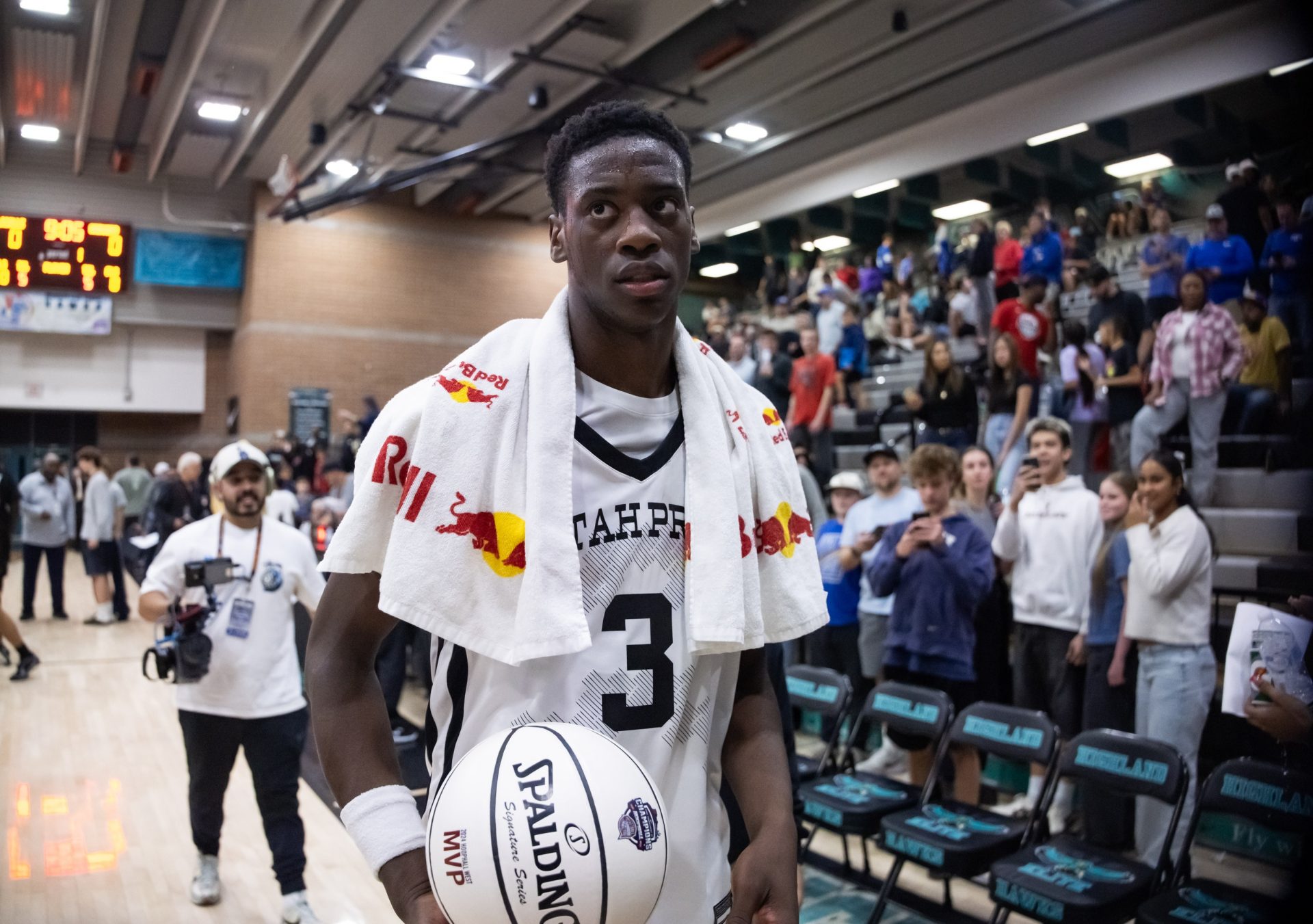Every team in college basketball that has the best overall roster has found success largely due to its financial freedom. Whether you agree or not, the current college basketball landscape is completely driven by NIL valuation. The team that can offer the most will almost always secure the top-tier commitments.
In light of that, AJ Dybantsa, the No. 1-ranked high school recruit, has secured a NIL deal worth around $5 million from BYU. Naturally, a number this big raised some eyebrows. But NBA Draft analyst Matt Babcock believes BYU isn’t crossing any lines. In his view, they are just playing the game right.
What Makes BYU’s Massive NIL Investment Sustainable?
Recently, some reports suggest that BYU’s financial strength has come under scrutiny following the massive NIL deal offered to AJ Dybantsa.
Last year, basketball insider Adam Zagoria reported that Brigham Young University had offered Dybantsa close to $7 million. However, in April, Dybantsa denied receiving that amount, saying, “I didn’t get that. That’s a false rumor.” Since he did not disclose the exact NIL value offered by BYU, many reports suggest that the deal is somewhere between $5 million and $7 million.
CBS Sports sources indicate the actual deal was approximately $5 million, which still represents one of the largest NIL packages in college basketball history. Given his status as the No. 1 overall college basketball recruit in the class of 2025, that figure is understandable. Dybantsa, a 6-foot-9 forward from Massachusetts, is also projected to be the No. 1 pick in the 2026 NBA Draft.
How Did BYU Land the Top Recruit Over Blue Bloods?
It is clear that the Cougars have aggressively positioned themselves as a major player in the NIL era. Dybantsa chose BYU over Alabama, North Carolina, and Kansas, traditional powerhouses that have won multiple national championships between them.
The key factor wasn’t just money. Dybantsa cited coach Kevin Young’s NBA ties as a major reason for his decision. Young, who was hired from the Phoenix Suns in April 2024, brought instant credibility to BYU’s program.
Why Does Matt Babcock Think BYU Can Keep This Up?
NBA Draft analyst Matt Babcock addressed concerns about BYU’s spending model in a recent appearance on the “Pete Sousa Show,” saying, “They have a lot of financial resources. And with that, it’s not just, you paying these guys to play, not to pay for play entirely. They’ve got great resources. They’ve got an NBA-qualified coach in Kevin Young.”
He further added, “And so the combination of the fan support, the financial resources, and just the staff they’ve put together with Kevin Young, and then just his support staff as well… So I don’t see there being any reason why it can’t be sustainable.”
BYU’s NIL collective, The Royal Blue, has stood out as one of the most aggressive in the country. The collective has 875 donors from more than 30 different states who have provided support to more than 300 BYU student-athletes across 13 teams.
The school’s financial backing comes from wealthy entrepreneurs in the Salt Lake City area, nicknamed “Silicon Slopes” for its tech industry growth.
Has Kevin Young Already Proven BYU’s Investment Strategy Works?
BYU’s recent success under head coach Kevin Young has helped justify their aggressive NIL spending. In his first season, Young led the Cougars to their first Sweet 16 since 2011 and finished the season 26-10, including five ranked wins.
BYU finished the 2024-25 season far exceeding expectations. Projected to finish 10th in the Big 12’s preseason poll, the Cougars orchestrated one of the most fruitful campaigns in program history. Young became the first BYU coach since Roger Reid in 1990 to lead BYU to the Big Dance in his first year.
Still, the future of such high NIL investments remains unclear, especially as NCAA rules continue to evolve. According to CBS Sports, if you’re going to recruit top five-level players, you need to be able to rally millions of dollars to pay them moving forward. This reality has fundamentally changed college basketball recruiting.
No one knows what will happen in the future, but for now, BYU’s financial gamble appears to be paying off. They’ve proven that with the right combination of money, coaching, and development, any school can compete at the highest level.
College Sports Network has you covered with the latest news, analysis, insights, and trending stories in college football, men’s college basketball, women’s college basketball, and college baseball!


